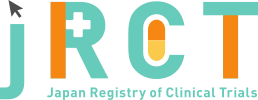臨床研究等提出・公開システム
|
Mar. 02, 2020 |
|
|
Dec. 20, 2021 |
|
|
jRCTc040190121 |
A study of Platelet rich plasma(PRP) therapy for refractory ulcer (A study of Platelet rich plasma(PRP) therapy for refractory ulcer) |
|
A study of PRP therapy (A study of PRP therapy) |
|
|
Ito Tohru |
Dec. 01, 2020 |
|
1 |
|
40s, Female, Disease name: Refractory ulcer (left lower leg) Background:Injured open fracture of left lower leg, peripheral neuropathy of lower limbs, it was intractable even after the usual treatment. Patient meets the selection criteria of this study and is related to the treatment with sufficient explanation and understanding. This treatment was performed after obtaining written consent. |
|
The patient's own blood is collected and PRP is obtained by an automated autologous platelet centrifuge (Magellan; Artetiocyte Medical Systems, Inc., Cleveland, USA). The area of ulcer and the amount of blood collected are 30 to 60 mL of blood collected for 10 x 10 cm of ulcer in general adults, and about 3 to 6 mL of platelet-rich plasma (PRP) can be obtained from this. As a local treatment, the necrotic tissue on the ulcer surface is removed to the extent possible to refresh the wound surface, and then PRP is applied to the wound or immersed in a wound dressing. If there is severe pain when removing necrotic tissue, it is performed under local anesthesia. Cryopreserved PRP was used from the second PRP onward. Frozen PRP was naturally thawed and administered in the same manner. |
|
No findings that could lead to exacerbation of symptoms were identified. |
|
Platelet-rich plasma (PRP) was administered to one female (40s) intractable ulcer (left thigh) during the year from March 6, 2019 to March 5, 2020. The selection criteria for this therapy, including patient background and symptoms, were observed. No deviation was found. No adverse events such as redness, exudate volume, bleeding, or pain associated with PRP administration were observed, and the area reduction rate from the first administration to 6 months after the final administration was 70% or more even in the follow-up after administration. No findings leading to exacerbation of symptoms were found. The ulcer gradually shrank, leaving only a linear ulcer 6 months after the final dose. Summarizing the above, it is considered that the safety of the regenerative medicine is sufficiently high. In this regenerative medicine study for refractory ulcers, it is considered to be scientifically valid from the image findings and the tendency of improvement of symptoms. Follow up observation will be continued as much as possible. |
|
40s, Female, Disease name: Refractory ulcer (left lower leg)Injured open fracture of left lower leg, peripheral neuropathy of lower limbs, intractable even after the usual treatment. On March 26, 2019, according to the protocol, PRP was prepared, immersed in artificial dermis (terdermis), and attached to the ulcer. A linear ulcer left 6 months after the final dose. The area reduction rate was 70% or more. PRP was effective in treating intractable ulcers. |
|
Nov. 29, 2021 |
|
https://jrct.mhlw.go.jp/latest-detail/jRCTc040190121 |
Shimada Kenichi |
||
Kanazawa Medical University Hospital |
||
1-1 Daigaku, Uchinada, Kahoku, Ishikawa 920-0293, JAPAN |
||
+81-76-286-2211 |
||
shimaken@kanazawa-med.ac.jp |
||
Masuda Naomi |
||
Kanazawa Medical University Hospital |
||
1-1 Daigaku, Uchinada, Kahoku, Ishikawa 920-0293, JAPAN |
||
+81-76-218-8200 |
||
regene@kanazawa-med.ac.jp |
| 30 | ||
Interventional |
||
single arm study |
||
open(masking not used) |
||
uncontrolled control |
||
single assignment |
||
treatment purpose |
||
Patients with refractory skin ulcers that are not improved or are |
||
Patients with advanced anemia, thrombocytopenia, etc., who are judged |
||
| 20age old over | ||
| No limit | ||
Both |
||
refractory ulcer |
||
The patient's own blood is collected and PRP is obtained by an automated |
||
refractory ulcer, Platelet rich plasma |
||
Response rate: The response rate is calculated by defining a case where |
||
Evaluate the safety of PRP therapy (adverse events, serious adverse |
||
| Mar. 02, 2020 | |
| Mar. 19, 2019 | |
Complete |
| Kanazawa Medical University Certified Committee for Regenerative Medicine | |
| 1-1 Daigaku, Uchinada, Kahoku, Ishikawa JAPAN, Ishikawa | |
+81-76-218-8200 |
|
| regene@kanazawa-med.ac.jp | |
| Approval | |
Feb. 24, 2017 |
